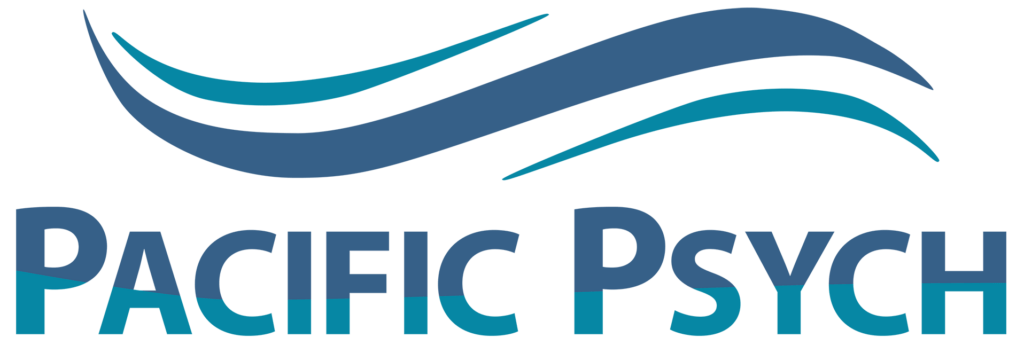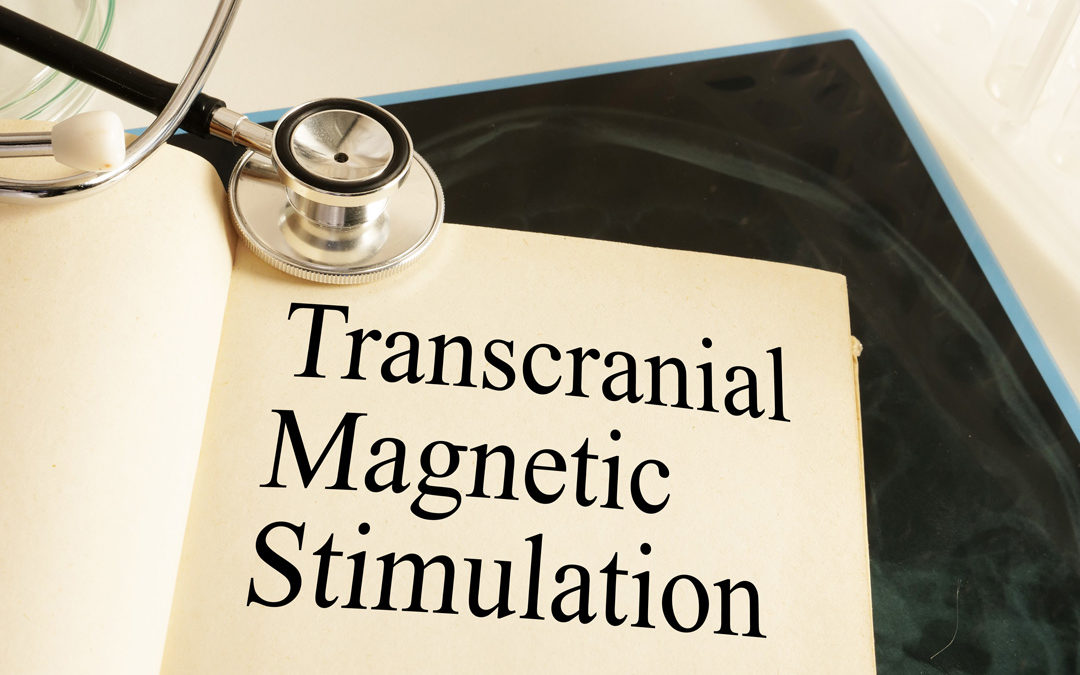TMS therapy is one of the many options available to people seeking alternative treatments for depression. This procedure has been around for decades and has improved over the years with additional research and insight, but still works much the same as it always has.
For those who have struggled to find relief with antidepressants or other treatment options, or if someone wants to try all non-medication routes first, this procedure could prove to be effective. The process involves using magnetic stimulation on specific nerve cells in the brain to offer relief from depression symptoms.
In this guide, we’ll discuss all the basics of TMS, including why it is effective, who could benefit, and more.
What is TMS Therapy?
This therapy is performed by using repetitive magnetic pulses, often also known as rTMS. In the session, there will be an electromagnetic coil placed on the scalp in the forehead area, which is used to deliver electromagnetic stimulation to the nerves in the brain. Although the exact mode of effectiveness is still being studied, researchers believe that the pulses stimulate the regions of the brain affected by depression by helping to increase their activity.
By stimulating the less active regions, this procedure changes the way the brain is working at a fundamental level, which has been shown to help improve mood and alleviate many common depression symptoms. There are some variations on how this procedure is performed and as research continues, so will the changes to provide the most effective treatment with this process.
Is TMS Therapy Effective?
There has been a decent amount of research on TMS since its first use back in the 1970s and 1980s, and most of the results have been positive. Although the studies are limited in figuring out the details of why this therapy works or what it does to alleviate the symptoms, the fact that it works is indisputable in many cases.
As research continues to improve and we learn more about TMS therapy, the effectiveness will likely continue to improve, as well. If the treatment seems effective and then the symptoms reappear or worsen over time, people can also have a secondary treatment, which is called re-induction. The effects will typically last for different lengths of time in each individual.
The way that this therapy is administered helps change the activity in the frontal cortex and other areas of the brain that are related to emotions and mood control. The activity stimulation can determine whether there is an increase or decrease in activity, depending on the outcome desired. Some new research even suggests that simulating the left versus the right side of the brain could have opposing effects.
Who Can Use This Therapy?
Not everyone will benefit from TMS therapy, but it has been shown to provide an alternative for most people. Those who are considering this procedure may be required to have a physical and psychiatric evaluation to ensure that TMS is the right solution and that it will be safe.
Typically, this treatment is offered to those who have tried other treatments to no avail. Medication and psychotherapy, or talk therapy, are the first two treatment options that people will explore. Those who need an alternative can try this option. It may also provide augmented support to those who are taking antidepressants or engaging in therapy. It’s not just an “instead”– research thus far has shown TMS to be an alternative as much as a supportive procedure that can be included as part of a comprehensive treatment plan.
People who are pregnant or considering pregnancy, as well as those who have any medical implants or metal devices in their body may want to talk to their provider before using this procedure as a treatment for depression. These devices include all metal and magnetic implants, bullet fragments, cochlear implants (hearing), stents, stimulators, pacemakers, and medication pumps, and others.
You should also let your doctor know first if you are taking medications, have a history of seizures, or have:
- Other mental health conditions
- Brain damage that is the result of injury or illness
- Severe or frequent headaches or a migraine condition
- Other medical conditions
If you’ve previously used TMS therapy, your provider should know the details of that procedure when planning your next session(s). It gives them the chance to know where you’re coming from and what you are trying to achieve.
What Are the Benefits of TMS Therapy?
This procedure offers plenty of perks for those who see positive results. Generally, as we’ve mentioned, it helps improve your mood and sense of positive thinking. Those who are open to the treatment will find that they may have a way to boost their medications without taking more, or that TMS offers the medication alternative that fits with their therapy. Ultimately, it offers a solution for just about everyone.
Not only that, but most of what is known about TMS therapy is positive:
- It offers a non-invasive alternative to depression treatment when medications and/or therapy aren’t working or may not be the ideal solution.
- TMS has been shown to improve mood and mental health by stimulating the brain to decrease and increase activity in the right areas throughout the day.
- This therapy offers an effective solution for Major Depressive Disorder (MDD) and specifically those with treatment-resistant forms of the condition. Considering that 30% of people don’t respond to treatment, there has to be another way.
- TMS has also been shown to assist with OCD, PTSD, schizophrenia, stroke rehab, and other conditions. Again, research is still early and ongoing, but it has shown promise to date.
- TMS has very few side effects and risks to worry about, and most of the ones that do affect people are generally mild or just a bit bothersome. Compared to the laundry list of potential risks of medications, it’s a much safer alternative.
TMS sessions have also been used to assist with:
- MS (multiple sclerosis)
- Nicotine addiction
- Chronic pain
- Alzheimer’s
- Parkinson’s disease
For those struggling to find relief, this alternative electromagnetic stimulation could be the ideal solution. These are just some of the biggest benefits, but there is a lot more potential to be had with this treatment. As time goes on, more advantages will likely be found, as well.
Are There Any Risks or Adverse Effects to Worry About?
Generally speaking, TMS therapy is minimally risky and doesn’t include a lot of inherent dangers or potential side effects. However, there are some circumstances where people may experience certain adverse effects or reactions. There’s always a small risk of an allergic reaction if you’re using or taking something for the first time. TMS typically doesn’t cause this, unless you happen to be allergic to the metal used to make the magnet (which rarely happens).
Below, we’ll look at the common side effects as well as the rare and more dangerous reactions as they are known currently. Bear in mind that these may change as research continues, but it seems to be very promising thus far.
Common Side Effects
Those who do experience side effects will typically see things like:
- Headache
- Discomfort of the scalp where stimulation occurred
- Tingling or facial spasms
- Lightheadedness or dizzy spells
These are typically mild to moderate in nature and will subside in a short time if they are experienced at all. Some people may see them initially, and then see them alleviated as the sessions continue. The doctor may also want to adjust the stimulation level to help, or they may suggest taking an OTC painkiller (such as ibuprofen) before you come in for your session.
Rare Adverse Reactions
Serious effects or dangerous reactions are few and far between. However, they must be noted because they may still affect some people who attempt to use TMS therapy. These effects include:
- Seizures
- Mania (usually in those with bipolar disorder)
- Hearing loss (when proper ear protection is not used)
Again, these are rare but they could become severe if left untreated or unaddressed. The discussion of hearing protection needs to happen– the TMS machine is loud. Some patients will report hearing issues even with the use of earplugs, but there isn’t much research about the effects of this over time, so it may just be a nuisance, at best.
Long-Term Effects
This therapy is not new, but the research available is still rather limited. Therefore, more information is needed before it can be determined whether there are any long-term side effects to be concerned about with TMS therapy.
As with any new medical treatment or procedure, you should always talk to your doctor about your current state of health and any medications you take before you try this solution for depression.
How Do Sessions Work?
TMS therapy is administered by a licensed TMS technician or physician that is trained in the practice and knows how to do it safely. Depending on where you go, the process might vary slightly, but it’s mostly a standard procedure:
- Measurements are taken to ensure that the TMS coil is put in the correct place on the patient’s head.
- The coil will be suspended over the scalp, and then administers a series of pulses to help measure the motor threshold.
- Once the threshold has been established, they can personalize the treatment and determine how much power is required for effective stimulation.
- Then, the coil is brought to the forehead region and put into place and the session begins. The coil will create a tapping sensation while treatment is ongoing.
Once the session has been completed, patients will be sent on their way and the process will be repeated in subsequent treatments until the desired result is achieved. It’s not a complex process but it is one that requires planning and one that should only be done by licensed professionals.
The sessions will vary in their length, depending on the equipment used and the amount of therapy required. Usually, they’re about 30-40 minutes and they will be done five days a week in ideal cases. Over 4-6 weeks, the procedure should produce sufficient results, including improved mood and fewer active depression symptoms, and more.
Is This Different from Electro-Shock Therapy?
The majority of people know of electro-shock therapy as the dangerous, controversial option used for the most difficult mental illness cases. It was first used in 1938 and was the choice for years, and especially for the treatment of mania. While proponents still swear by it, the opponents insist that it is nothing like TMS and that TMS is the safer, more respectable, less “animalistic” therapeutic approach.
The idea of TMS is similar to that of the former, but without the fear-inducing levels of electric shock. Studies have found that the single targeted stimulation point seems to be the most effective for people who are struggling with depression. Stimulation elsewhere isn’t engaging enough, so it has to be right at the front of the brain. Think of TMS as a more refined, strategically designed therapeutic approach.
How Do I Learn More?
If you think that TMS therapy could be the solution you have been seeking, contact us to discuss your needs. We’ll guide you through the process, provide a full assessment of your condition and circumstances, and make sure that we help you create the best comprehensive treatment plan, including TMS therapy if that proves to be a worthwhile option.
Our team has been working with alternative treatments and helping people create comprehensive treatment plans that provide ongoing relief from depression and other mental health conditions. We’ve got plenty of experience with TMS and other alternative therapies for several years and we know how to help people create a plan that suits their needs. Call Pacific Psych today to learn more and get started.
Resources
https://www.ncbi.nlm.nih.gov/pmc/articles/PMC2993526/
https://www.healthline.com/health/tms-therapy
https://www.mayoclinic.org/tests-procedures/transcranial-magnetic-stimulation/about/pac-20384625

